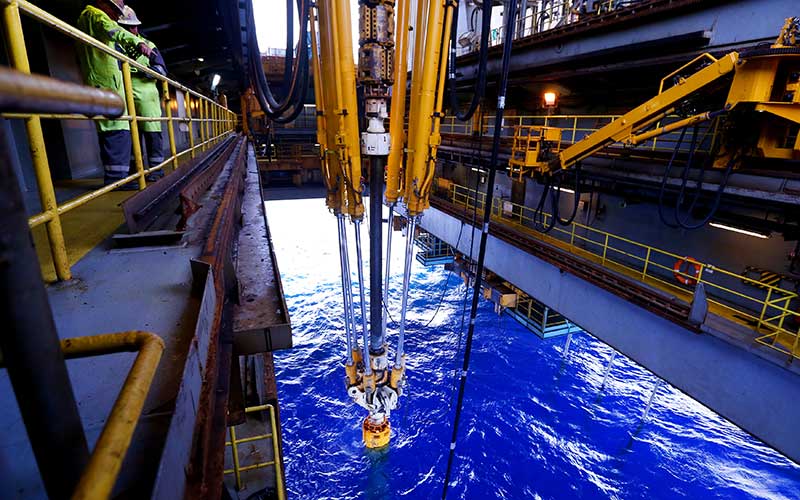About the Course: Well engineers who are responsible for technically evaluating and authorizing programs for drilling or working over wells must have the required skills and competencies to safely design wells of varying nature. They also need to be able to confirm that well delivery and intervention programs generate intrinsic well control assurance. Such work programs must establish, verify, monitor and maintain suitable and sufficient barriers for the entire well lifecycle – from spud to abandonment. Well engineers must also be able to select a suitable drilling or workover rig, capable of safely performing the work within its operational envelope. Advance Well Engineering is basically based on pore pressure, kick tolerance, casing functions, casing design and cementing. It is sometimes related to drilling and petroleum engineering. A valid objective of the well-planning process is to minimize the cost of the well without jeopardizing the safety aspects.
This intensive 6-week program has been put together to cover Advanced Well Engineering topics. The program intends to uplift the knowledge and skills for Students and Professionals, who will directly involve in well designing. It will also benefit staff that are or will be working as a member of a day-to-day operations team.
It is delivered through presentation of a series of interactive lectures, videos and animations, case studies, simulated drilling scenarios and facilitated study group discussions supported by technical reviews. Underpinning the course is a team-based well design project.
Learning Objective:
- Guidance under one world class best instructor
- practical explanation on each topic with theory for strong fundamental Course Material based on API, Norks, ISO Standard (Will be share these standard) as well multinational co. manual
- Drilling downhole challenges & Mitigations like HPHT, Salt, Hydrate, ERD, Sinkhole
- Challenge's & Mitigation drilling in Land, Shallow and Deepwater environment
- Latest technology application to overcome challenges
- How to use Well Engineering Software, Theory covers input & output with practical examples
Duration: 35+ hours
Prerequisites: You could be involved in providing critical support from our global exploration projects, designing, building, and maintaining different types of wells all over the world. To do this you'll need a high level of technical competency, passion, and a collaborative work ethic.
Topic to be covered:
1. Introduction to Drilling
- Video demonstration of drilling process
- Practical demonstration how drilling process fits into as Oil & Gas Company Well Delivery Process.
· Rig Component
- Type of rigs
- Hoisting, Circulating,
- Rotating equipment
- Pressure control equipment
- Rig sizing- Derrick Capacity and substructure, Total Power Requirement
· Subsurface Significance for Well Engineering
- Pore Pressure, Define, Evaluation method
- Formation Fracture Pressure, Define, Evaluation method, FIT, LOT
- Maximum allowable annular pressure MAASP, Maximum Anticipated Surface Pressure MASP.
· Casing Design
- Casing Seat Selection philosophy for Onshore/Offshore
- Kick Tolerance significance and evaluation methods
- Casing function, type, properties, connection, Liner application
- Casing/Liner Design, How to analyses Loads different loads (Burst, Collapse, Tension) combination Biaxial, Triaxial, Safety Factor, Design Factor
- Well Engineering Software to design Casing with practical example
- International references for Casing Design API5CT & International I company manual will be shared.
2. Cementing Design
- Functions of cementing, Additives, Slurry Testing, Cementing Hardware
- Behind Casing/Liner Cementation Calculation with example
- Cement Plug application Calculation with example • Determine Quality of Cement behind casing Cement Bond
- Evaluation example
- International references for Cementing API, 10A, 10F & International company manual will be shared.
3. Drilling Fluids
- Functions of mud, selection criteria, additives & Testing
- Drilling fluid properties, problems and control
- Rig set up for fluid as well as Solid Control Equipment
- International references for Drilling Fluid API, 13A & International company manual will be shared
4. Rig Hydraulics
- Pressure losses, Pump output, Hydraulics fundamentals, Flow type/regimes
- Rheological model type and calculation written, Surge, Swab
- Bit Hydraulics optimization by software as well as calculation demonstration
- International company menu will be shared.
5. Drilling Bits
- Selection Criteria, Types of bits, Co. nomenclature
- IADC Dull grading
- Drilling cost calculations and comparing new industry tend
- IADC manual as well as all service co drill bit related material
- Drill string Design
- Component, Function, Selection, Criteria for BHA
- Non Std BHA component, Drilling Jars type selection
- Drill string Design Criteria, Vibration Examples
- API 7RG,7,5D international reference as well as multinational manual
6. Directional Drilling
- Reasons, Coordinate System, UTM, References Directions
- Planning consideration, type of profile, tools and capability
- Dogleg severity, trajectory calculation, anticollision • Demonstration with well engineering software
- API 7RG international reference as well as multinational manual Well bore
7. Stability & Hole Problems
- Determine In-situ stress, rock properties, rock failure, stress around well bore
- Stuck Pipe-Mechanism, prevention technique in planning/execution
- Loss Circulation, Reasons, Prevention technique in Planning/execution
- Fishing, tools, calculation
- HPHT, Salt, Hydrate, ERD, Sinkhole Challenges, and solutions
- All multinational co manual will be provided
8. Determine Well cost
- Reasons for costing, factors affected cost, time estimate
- Authorization for Expenditure AFE practical calculation
- Reference's manual will be provided.
9. Blow Out Preventor (BOP)
- Function, BOP Selection criteria, Type
- BOP Component and working mechanism
- Accumulator Sizing
- Well control types of methods (If time permits)
- API53 References as well as another manual will be provided


